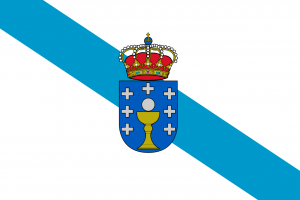Language/Galician/Culture/Galician-Traditions
| ◀️ Galician History — Previous Lesson | Next Lesson — Galician Cuisine ▶️ |
Galicia, a region in northwest Spain, is known for its unique traditions, festivals, music, and dance. In this lesson, we will explore some of the most notable aspects of Galician culture and learn about the meaning behind them. From the vibrant festivals to the haunting music, you will see how Galicia's traditions have been preserved and celebrated throughout the centuries.
Traditional Festivals
One of the most distinctive features of Galician culture is its celebrations and festivals. Galicians are known for their love of festivities and their ability to turn almost every occasion into a party. Most festivals in Galicia have religious origins, but many of them also include pagan traditions that date back to pre-Christian times. Here are some of the most famous festivals in Galicia:
- **Carnival (Entroido)**: A time for excess and indulgence, Carnival is celebrated in Galicia before the beginning of Lent. During this festival, people dress up in costumes, dance, and eat traditional dishes such as cocido, a rich stew made with pork and chickpeas. One of the most distinctive features of the Galician Carnival is the use of "peliqueiros", colorful characters covered in bells that roam the streets trying to scare away evil spirits.
- **Saint James' Day (Dia de Santiago)**: This festival is celebrated on July 25th in honor of the patron saint of Galicia, Saint James. It is one of the most important festivals in the region, and it attracts thousands of tourists every year. Pilgrims from all over the world walk the "Camino de Santiago", a network of ancient pilgrimage routes that converge on the city of Santiago de Compostela, where the remains of Saint James are said to be buried.
- **Seafood Festival (Festa do Marisco)**: If you love seafood, then you cannot miss the Seafood Festival in the town of O Grove. This festival is held in October and is dedicated to Galicia's most famous culinary treasures: clams, oysters, scallops, and all kinds of fish. Visitors can taste a variety of seafood dishes and attend cooking classes and workshops to learn how to prepare them.
Traditional Music
Music is an integral part of Galician culture, and it reflects the region's unique history and traditions. One of the most distinctive musical genres in Galicia is "música tradicional", traditional music that has been passed down from generation to generation. Galician traditional music is characterized by its haunting melodies, intricate rhythms, and the use of traditional instruments such as the gaita, a type of bagpipe.
- **Gaita**: The gaita is the most emblematic musical instrument of Galicia. It is a type of bagpipe that consists of a chanter, a bag, and one or more drones. The chanter produces the melody, while the drones provide a continuous drone sound. The gaita has been used in Galician music for centuries and is an essential component of many traditional songs and dances.
- **Pandeiretada**: The pandeiretada is a traditional dance that is accompanied by the sound of the pandeireta, a type of tambourine. It is a popular dance that is often performed at weddings, festivals, and other social events. The pandeiretada is known for its lively rhythm and energy, and it features intricate footwork and movements that are usually performed by a group of dancers.
Traditional Dance
Dance is another important element of Galician culture, and it has been an important part of the region's social life for centuries. Galician traditional dance is characterized by its dynamic movements, complex rhythms, and colorful costumes. Here are some of the most famous traditional dances in Galicia:
- **Muñeira**: The muñeira is a fast-paced dance that is typically performed in pairs. It features complex footwork and acrobatic movements that are accompanied by the sound of the gaita and other traditional instruments. The muñeira is one of the most popular traditional dances in Galicia, and it is often performed at festivals and celebrations.
- **Alalá**: The alalá is a slow, melancholic dance that is accompanied by a song of the same name. The lyrics of the song tell the story of the hardships and struggles of life in Galicia, and the dance reflects the sadness and longing expressed in the music. The alalá is usually performed by a single dancer, and it is a powerful expression of the Galician spirit.
Conclusion
Galician culture is rich and diverse, and it is characterized by its unique traditions, festivals, and music. From the vibrant colors and sounds of the festivals to the haunting melodies of the traditional music, Galicia's culture has been preserved and celebrated throughout the generations. If you are planning to visit Galicia, make sure to experience some of the region's unique cultural offerings and discover the history and meaning behind them.
Videos
Galician vs Portuguese (How SIMILAR are they?) - YouTube
Galician folk music: Pasodobre A Paviola - YouTube
Galician folk music - YouTube
Other Lessons
Sources
| ◀️ Galician History — Previous Lesson | Next Lesson — Galician Cuisine ▶️ |

